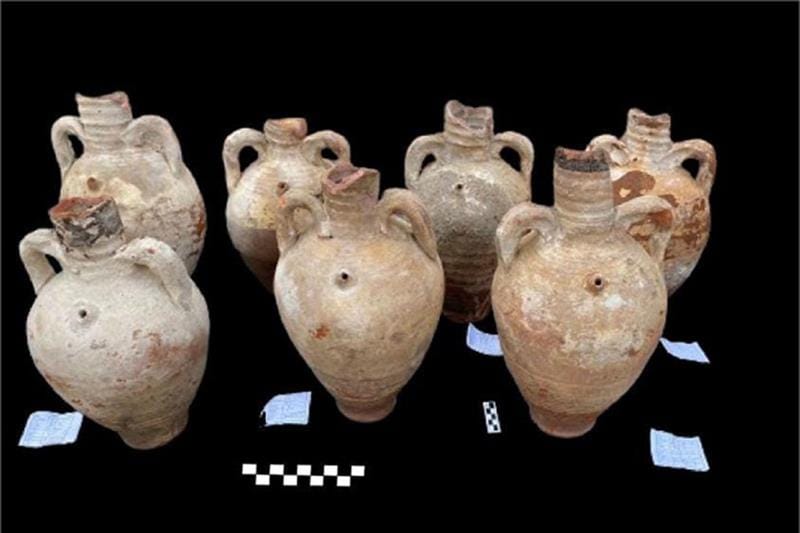In a significant archaeological breakthrough, an Egyptian excavation team has uncovered a two-level mudbrick building dating back to the 6th–7th centuries in the Manqabad area of Assiut Governorate, located roughly 12 kilometers northwest of Assiut City in Upper Egypt. The announcement was made by the Ministry of Tourism and Antiquities on Sunday.
The structure, believed to have served a religious or monastic function, was coated in white mortar and contains several detailed wall paintings that offer insight into Coptic religious practices and symbolism of the period. According to Mohamed Ismail Khaled, Secretary-General of the Supreme Council of Antiquities, one of the most visually compelling murals depicts a face encircled by eyes—an iconic motif in Coptic art meant to represent heightened spiritual awareness and divine insight.
Another striking fresco features a man identified as Joseph the Carpenter holding a child, likely Christ, accompanied by figures believed to be early Christian disciples. Coptic inscriptions frame the scene, indicating the mural’s religious significance and possibly referencing Biblical narratives revered by the local Christian community during that era.
Gamal Mustafa, who heads the Islamic, Coptic, and Jewish Antiquities Sector, reported that additional artifacts were also recovered at the site. Among them is a tombstone inscribed with Coptic script commemorating a saint, ritual vessels of various sizes bearing Coptic letters, and a decorative stone frieze carved with animal figures. These findings point to the site’s rich spiritual heritage and suggest it may have been part of a larger ecclesiastical or monastic complex.
Mahmoud Mohamed, Director General of the East Assiut Antiquities Zone, emphasized that the mission is still in progress. Experts are continuing to document and analyze the site’s murals and structural features to determine the building’s exact role in the region’s Coptic Christian history. The ongoing research aims to piece together the architectural layout and its relation to religious practices of the time.
The Manqabad archaeological site itself has a long history. It was first identified in 1965, but full-scale excavations did not commence until 1976. Since then, the site has undergone several seasonal excavation campaigns. This latest discovery adds a new layer to the understanding of Egypt’s Coptic period and reinforces the importance of Manqabad as a center of early Christian life in Upper Egypt.
The mission’s findings contribute to a broader effort to preserve and explore Egypt’s diverse cultural heritage, spanning Pharaonic, Greco-Roman, Islamic, and Christian eras.



